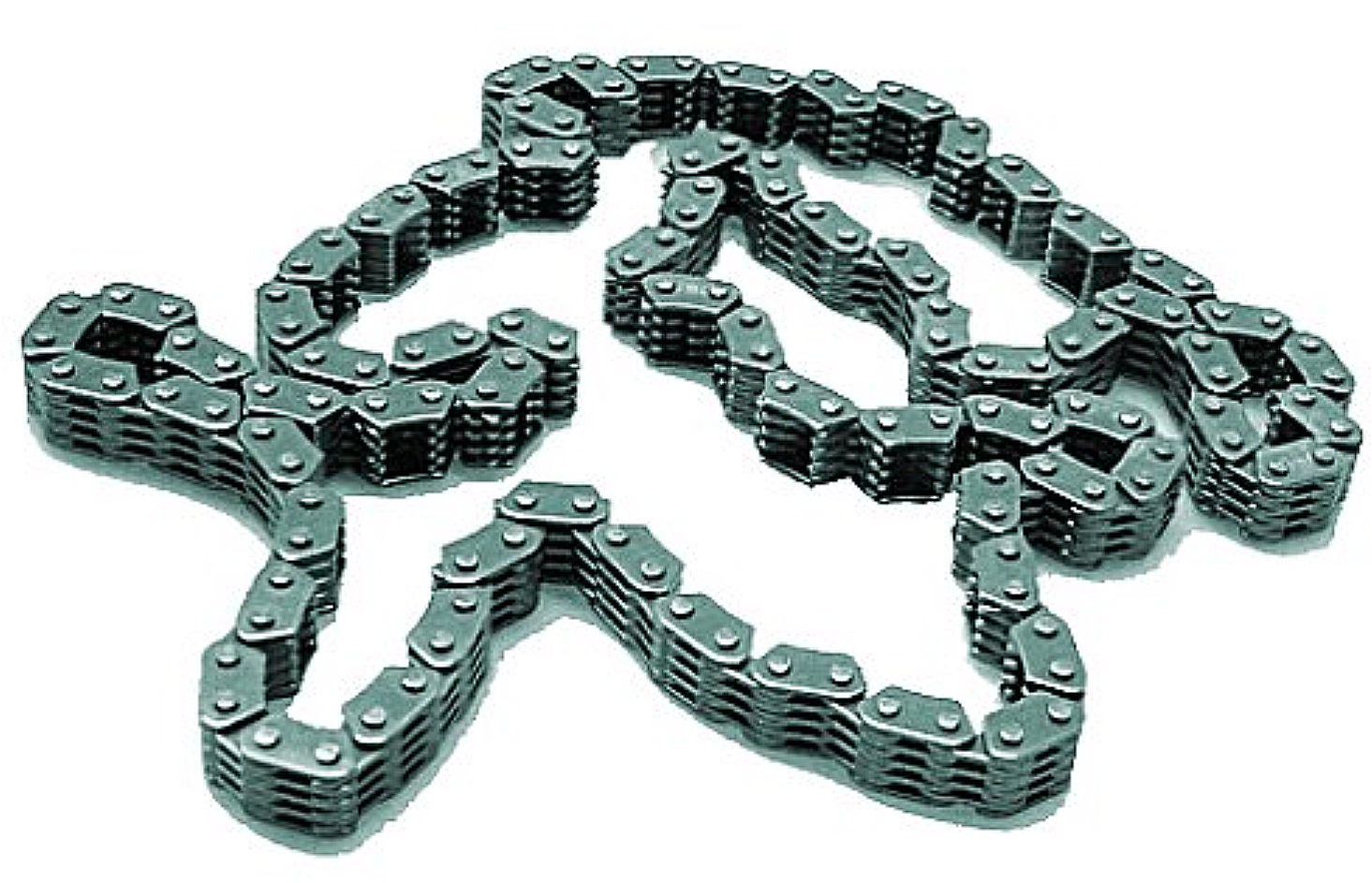  ® ®
|
The Hy-Vo cam chain |

|
|
In this article's title above, the word "Hy-Vo" is capitalized because it is a trade name. Kinda like Kleenex or Sawzall. The accepted non-proprietary names include "gear chain", "link plate chain", and "silent chain". "Hy-Vo", perhaps the most recognized name, stands for "high velocity", which comes from the idea that the chain when it was introduced on car engines would self-tension due to its mass and centrifugal force. It didn't need a tensioner.
Fair enough. But therein lies the tale, as someone once said. In powersports use, the Hy-Vo chain is found in both untensioned and tensioned applications, and in the latter, this type of chain has proved troublesome. You could say it was never designed to be clamped between two plastic slippers. Whatever the reason, Honda's Hy-Vo cam chains, tensioned of course, are not the set-it-and-forget-it parts the old roller type cam chains mostly were. Nor, despite an assumed superior strength, do they wear any less quickly.
Honda's Hy-Vo type cam chain can through wear get extremely loose until it starts making such a metal-on-metal sound that visions of internal damage make riders of these old bikes panic. Whether the primary chain in CB350/400 fours and CB500/550 fours, or the cam chain in a host of Honda models beginning in about 1978, it's a helluva racket.
The good news for the cam chain Hy-Vos at least is that mere adjustment saves the day. Ah, but that adjustment, though easy, has proved to not be successful when done the Honda way. In most cases, it is best done without the engine running. As for the smaller SOHC four primary chains, careful engine tuning will quiet them considerably, but not in all cases completely.
|
|
Last updated June 2025 Email me www.motorcycleproject.com My bio © 1996-2025 Mike Nixon |